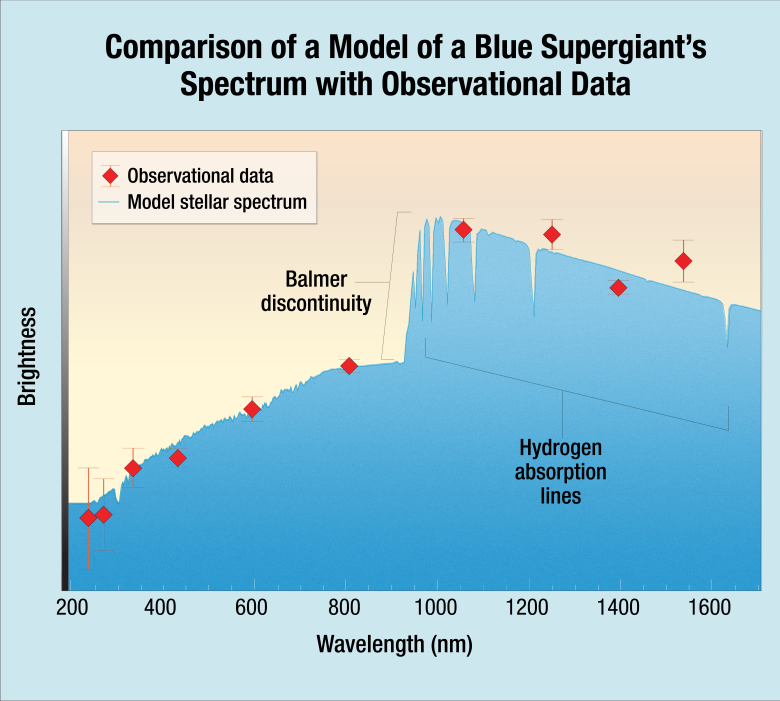 The set of images shows a gravitational-lens cluster of galaxies, through which a new star is discovered. The blue supergiant codenamed Icarus is marked with a white arrow in the bottom right photo. Photos: NASA / ESA / P. Kelly
The set of images shows a gravitational-lens cluster of galaxies, through which a new star is discovered. The blue supergiant codenamed Icarus is marked with a white arrow in the bottom right photo. Photos: NASA / ESA / P. KellyAstronomers have long used
gravitational microlensing to "increase the luminosity" of a telescope tens or thousands of times - and to observe ultra-long parts of space that are billions of light-years distant from us in space-time. Repeatedly in such a way ultra-long galaxies were discovered, and sometimes even individual stars. But the star found now under the code name Icarus is
100 times farther away than any of the previously observed stars, with the exception of supernova explosions.
An international group of researchers has published
evidence that the object discovered through a gravitational-lens cluster of galaxies is a blue supergiant nearly 10 billion light years away. That is, Hubble registered the light emitted by a star just 4.4 billion years after the Big Bang.
Gravitational microlensing is an effect predicted by Einstein’s general theory of relativity. It occurs when a massive body (a planet, a star, a galaxy, a cluster of galaxies, a cluster of dark matter) changes the direction of propagation of electromagnetic radiation with its gravitational field, just like an ordinary lens changes the direction of a light beam. It turns out a kind of lens analogue, through which only distant objects can be viewed.
In this case, a cluster of galaxies acted as a gravitational lens. It randomly wanders between the Earth and distant background objects, usually providing an additional increase of about 50 times. If in a cluster of a lensing galaxy, by a lucky chance, a smaller, perfectly aligned object appeared, then the background can be increased 5,000 times.
As often happens, the discovery made by accident. Hubble discovered Icarus by observing the Refsdal supernova. According to calculations, soon the light from the supernova should have been lensed by the MACS J1149 galactic cluster, which is located at a distance of about 5 billion light years. But while the supernova has not yet appeared in sight, astronomers were surprised to find in the same sector a new source of light. The luminosity of the star gradually increased.
 Photos: NASA / ESA / P. Kelly
Photos: NASA / ESA / P. KellyResearchers with the help of Hubble measured the spectrum of the star - and noticed that the temperature of the star remained unchanged, despite the increase in brightness. This means that the space telescope did not notice another supernova like Refsdal, but some kind of stable star. Moreover, the light from it passes not only through the lens of the galactic cluster MACS J1149, but also is additionally bent by some small, but massive object inside the cluster. As a result, microlensing is carried out with a factor of more than 2000.

“We know that microlensing was caused by either a star, or a neutron star, or a black hole of stellar mass,” says Steven Rodney from the University of South Carolina in a
press release , co-author of the scientific work. Therefore, the discovery of Icarus will allow astronomers to get a new understanding of the composition of the galactic cluster itself, he explained. Given that galaxy clusters are among the most massive and stretched structures in our Universe, studying their composition will inevitably help increase our overall understanding of the Universe.
Scientists believe that the open star Icarus (MACS J1149 Lensed Star 1) will help to learn more about one of the most mysterious materials in the Universe - dark matter. At least weed out some of the most exotic theories. “If dark matter is at least partially composed of relatively low-mass black holes, as was recently proposed, we would see it in the curvature of light from Icarus,” said Patrick Kelly, an astrophysicist at the University of Minnesota and lead author of the scientific work. “Our observations do not confirm the possibility that most dark matter consists of such black holes with a mass of about 30 times the mass of the Sun.”
The scientific article was
published on April 2, 2018 in the journal
Nature Astronomy (doi: 10.1038 / s41550-018-0430-3).